Hogarth Press bibliographic designs
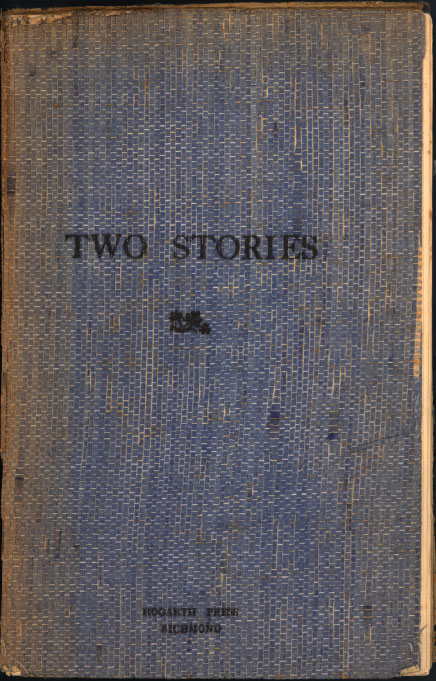
Leonard and Viginia Woolf, Two Stories (1917)
This was the first publication of the Hogarth Press. It contains the story Three Jews by Leonard Woolf and the essay The Mark on the Wall by Virginia Woolf, with four small woodcuts by Dora Carrington. 150 copies were printed. It had 34 pages and sold for 1s. 6d.
We decided to print a paper-covered pamphlet containing a story by each of us and try to sell it by subscription to a limited number of people … We set to work and printed a thirty-two page pamphlet, demy octavo … We bound it ourselves by stitching it into paper covers.
The total number finally sold was 134, and all but five or six of them were friends or acquaintances … The total cost of production was £3 7s. 0d., which included the noble sum of 15s to Carrington for the woodcuts, 12s. 6d. for paper, and 10s. for the cover paper. The two authors were not paid any royalty. The total receipts turned out to be £10 8s. 0d., so that the net profit was £7 1s. 0d.
Leonard Woolf, An Autobiography
Hogarth Press studies
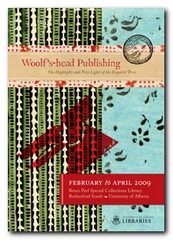 Woolf’s-head Publishing is a wonderful collection of cover designs, book jackets, and illustrations – but also a beautiful example of book production in its own right. It was produced as an exhibition catalogue and has quite rightly gone on to enjoy an independent life of its own. This book is a genuine collector’s item, and only months after its first publication it started to win awards for its design and production values. Anyone with the slightest interest in book production, graphic design, typography, or Bloomsbury will want to own a copy the minute they clap eyes on it.
Woolf’s-head Publishing is a wonderful collection of cover designs, book jackets, and illustrations – but also a beautiful example of book production in its own right. It was produced as an exhibition catalogue and has quite rightly gone on to enjoy an independent life of its own. This book is a genuine collector’s item, and only months after its first publication it started to win awards for its design and production values. Anyone with the slightest interest in book production, graphic design, typography, or Bloomsbury will want to own a copy the minute they clap eyes on it.
![]() Buy the book at Amazon UK
Buy the book at Amazon UK
![]() Buy the book at Amazon US
Buy the book at Amazon US
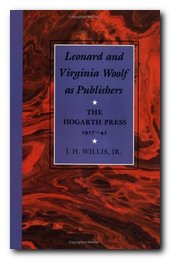 Leonard and Virginia Woolf as Publishers: Hogarth Press, 1917-41 John Willis brings the remarkable story of Leonard and Virginia Woolf’s success as publishers to life. He generates interesting thumbnail sketches of all the Hogarth Press authors, which brings both them and the books they wrote into sharp focus. He also follows the development of many of its best-selling titles, and there’s a full account of the social and cultural development of the press. This is a scholarly work with extensive footnotes, bibliographies, and suggestions for further reading – but most of all it is a very readable study in cultural history.
Leonard and Virginia Woolf as Publishers: Hogarth Press, 1917-41 John Willis brings the remarkable story of Leonard and Virginia Woolf’s success as publishers to life. He generates interesting thumbnail sketches of all the Hogarth Press authors, which brings both them and the books they wrote into sharp focus. He also follows the development of many of its best-selling titles, and there’s a full account of the social and cultural development of the press. This is a scholarly work with extensive footnotes, bibliographies, and suggestions for further reading – but most of all it is a very readable study in cultural history.
![]() Buy the book at Amazon UK
Buy the book at Amazon UK
![]() Buy the book at Amazon US
Buy the book at Amazon US
Bloomsbury Group links
![]() Bloomsbury Group – tutorials, critical studies, resources
Bloomsbury Group – tutorials, critical studies, resources
![]() Bloomsbury Group – portraits and biographies
Bloomsbury Group – portraits and biographies
![]() The Bloomsbury Group – Who Were They?
The Bloomsbury Group – Who Were They?
![]() Hogarth Press book jacket cover designs
Hogarth Press book jacket cover designs
© Roy Johnson 2005
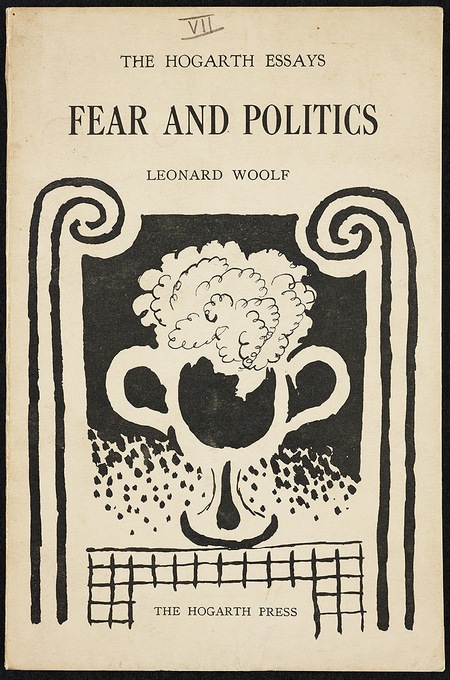
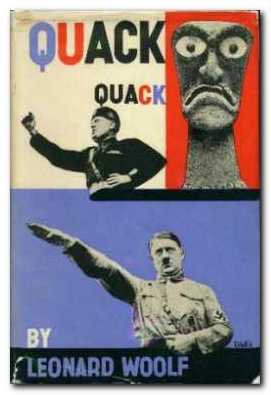
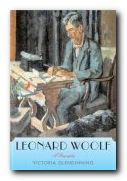
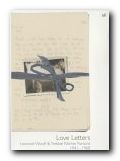
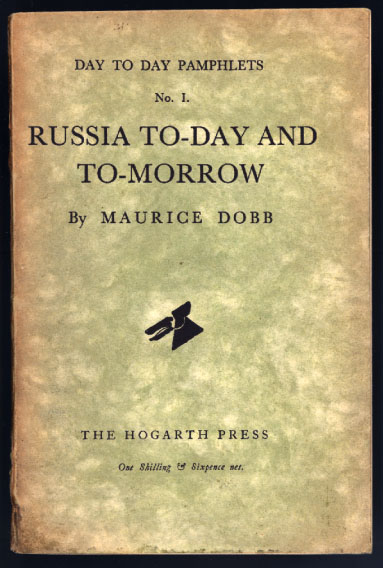
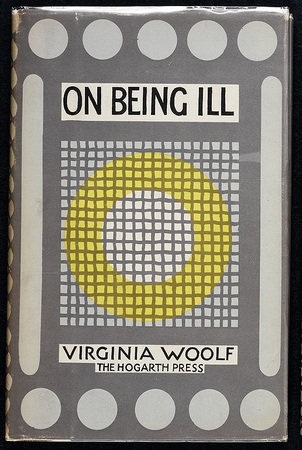
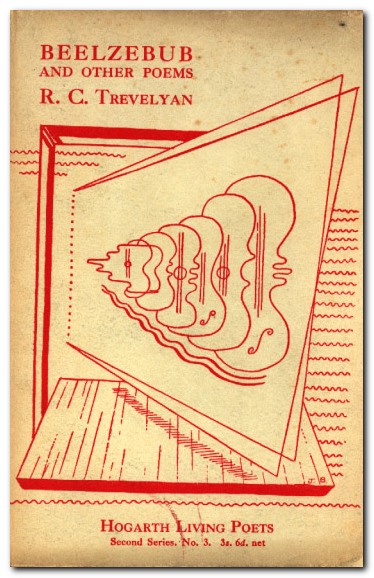
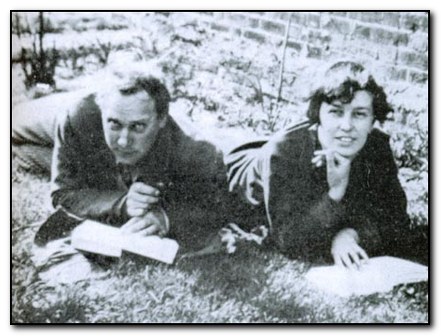
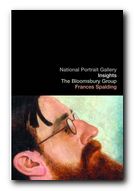 The Bloomsbury Group is a short but charming book, published by the National Portrait Gallery. It explores the impact of Bloomsbury personalities on each other, plus how they shaped the development of British modernism in the early part of the twentieth century. But most of all it’s a delightful collection of portrait paintings and photographs, with biographical notes. It has an introductory essay which outlines the development of Bloomsbury, followed by a series of portraits and the biographical sketches of the major figures.
The Bloomsbury Group is a short but charming book, published by the National Portrait Gallery. It explores the impact of Bloomsbury personalities on each other, plus how they shaped the development of British modernism in the early part of the twentieth century. But most of all it’s a delightful collection of portrait paintings and photographs, with biographical notes. It has an introductory essay which outlines the development of Bloomsbury, followed by a series of portraits and the biographical sketches of the major figures.